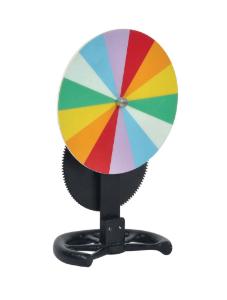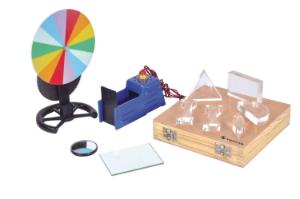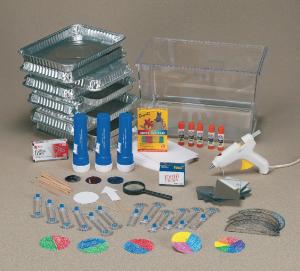Benham's Disk Activity - What Colors Do You See?
Grade Level: Grades K - 5
Discipline: STEM
Standards: Florida Standards
1-PS4-2: Make observations to construct an evidence-based account that objects can be seen only when illuminated.
1-PS4-3: Plan and conduct an investigation to determine the effect of placing objects made with different materials in the path of a beam of light.
SL.1.1: Participate in collaborative conversations with diverse partners about grade 1 topics and texts with peers and adults in small and larger groups. (1-PS4-1), (1-PS4-2), (1-PS4-3).
In 1894, toymaker Mr. C.E. Benham discovered that a spinning disk with a particular pattern of black and white marks could cause people to see colors. Mr. Benham called his disk an “Artificial Spectrum Top”. Benham’s Top (or Benham’s Disk) has puzzled scientists for over 100 years.
- At the end of this period of instruction, students will have built a replica of Benham’s disk. Students will learn about two different parts of their eye — rods and cones.
- Students will not be expected to remember what rods and cones specifically do, but will have a baseline understanding that there are different parts of the eye responsible for seeing light and dark.
- Students will understand through experimentation that objects or colors that can be seen in light cannot be easily seen in the dark.
Learn more by downloading the activity above.
Recommended Products
[StartProductBlock]

Newton's Color Disc
Easily demonstrate that all the colors of the visible spectrum can be combined to form white light with this simple device. Comprised of a pulley mounted on a metal stand, the seven colored metal disc is driven by a belt connected to a hand-driven wheel.
[EndProductBlock]
[StartProductBlock]

Concepts of Light Classroom Kit
Using mirrors, lenses, and a ray box, you can help your students better understand how light can be bent or reflected in different ways based on the shape of the lens or mirror. You can also explore how light and color are related.
[EndProductBlock]
[StartProductBlock]

Exploring Light's Properties Lab Activity
This lab activity includes three investigations that enlighten students as they explore the many unique properties of light. Using the physical science framework concepts of Motion and Stability: Forces and Interactions (PS2) and Energy (PS3), students explore the properties of white light, build and investigate primary color wheels, and research the straight line motion of light.
[EndProductBlock]
